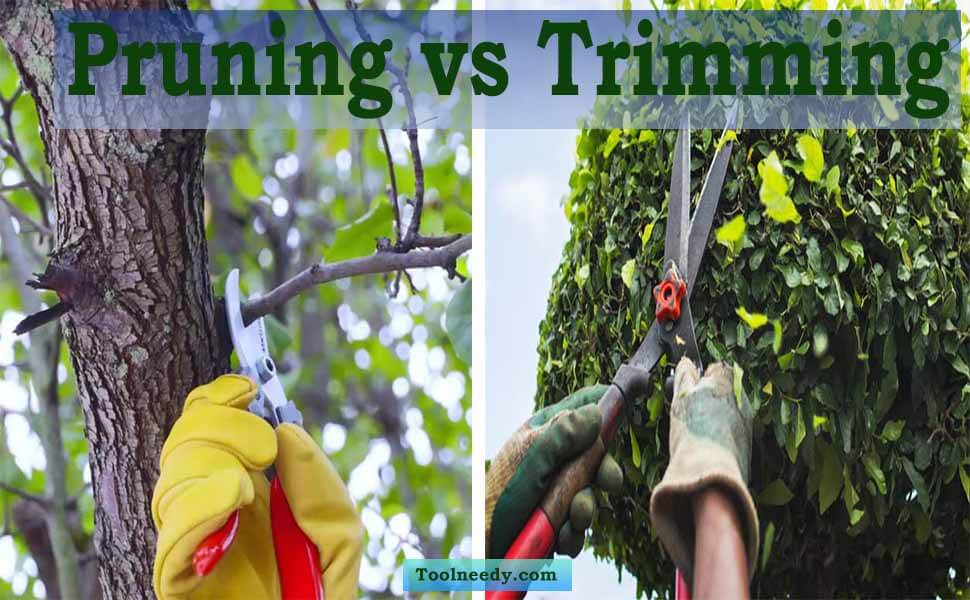To healthily and properly grow, trees need treatment. Pruning or trimming is one of the best ways to take care of trees and shrubs. This treatment not only helps trees to grow perfectly but also increases the aesthetic beauty of your house. To do this you require some essential and special gardening tools. And yes, the necessity to know how to use these tools to prune or trim trees is important as well. Both ways are needed because pruning or trimming is done at different times. This is exactly why, knowing pruning vs trimming and their differences in detail would be so helpful.
To have the treatment to your trees, you should acquire in-depth knowledge of all about this. The end and final result of trimming and pruning are healthy and undeniably aesthetically appealing trees, shrubs, and hedges.
So, what is pruning and trimming? Let’s now learn first pruning vs trimming and then we will go into detail.
What is Pruning?

Tree pruning is a kind of treatment of the trees that help trees, shrubs, and hedges to grow in a healthy manner. We can often see a commercial building is kept clean and prune the trees in a timely manner in order to look the house more attractive and to increase its beauty.
However, the term pruning is mostly related to cutting off branches, twigs, buds, and sometimes even roots of trees. Some trees have dead branches or diseased parts that are mandatory to prune so that other branches or parts of them don’t infect.
In addition, for example, sometimes you will see the utility companies cut the branches that are growing in the direction of electrical wires or growing in the wrong direction which is an understandable and glaring example of tree pruning. They cut the overgrown parts of the branches of the trees and this is how they prune.
Another example is that you may need to prune some large or small tree branches that are overhanging the swimming pool.
What is Trimming?
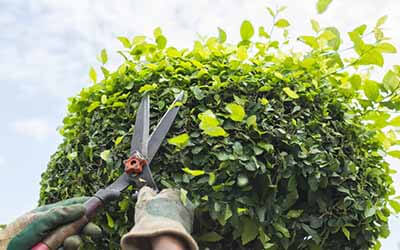
The term trimming is related to shaping the plants to a certain design. Experienced gardeners can trim hedges to a certain shape like a box shape or a mound. Sometimes you may see mound layering made by trimming hedges. This process enhances the beauty of plants and helps to promote healthy growth. Needless to say, a professional and well-trimmed hedge adds to your yard’s appeal.
In addition, you may have heard the term ‘Topiary’. Anyways, topiary means the art of trimming trees and shrubs for aesthetic purposes. A professional and trained gardener is able to make such a topiary by trimming hedges or shrubs or trees that it will thoroughly change its look and will incredibly improve its beauty. And this is how you can add up the value of your property.
If you are unable to do trimming or pruning, there are always some folks who are overwhelmed with these aspects of gardening, you can take help from them. However, the service becomes very essential if you have a huge overgrown tree. Well if you don’t do that your garden can be ravaged by a storm.
What is The Purpose of Pruning and Trimming a Tree?
To help grow a tree healthily requires a timely manner of pruning or trimming. Pruning and/or trimming can be helpful and effective to try to make a specific shape, keep the trees away from the wrong direction, prevent diseases and insects, remove dead or loose branches, and grow a perfect level of the trees. To do this pruning and trimming, certain tools are required namely hand shears or lopping shears, tree trimmer, etc. They are truly essential to growing up in a good health.
Equipment for Pruning and Trimming
In order to do pruning and trimming some specific tools are required because you cannot do this kind of job with any tools. So, some tools are specifically designed for tree trimming and tree pruning. Let’s now know the equipment pruning and trimming are used for.
Equipment for Pruning
Large branches of trees or deceased or infected branches are cut off which includes pruning. To do the pruning two types of shear tools are usually used. The two shears are: Hand shears and Lopping shears.
Hand shears – this tool is generally used and handled with one hand to cut small branches, twigs, and foliage. Hand shears are also used for removing small, easy-to-remove buds and leaves.
Lopping shears – this tool has 1- to 2-foot long handles, those are meant for cutting off thick branches. In terms of thick tree trunks, an electric tree saw is required to prune them.
Equipment for Trimming
While shears are used for pruning, hedge trimmers are used for trimming plants and shrubbery. Besides manual hedge trimmers, electric hedge trimmers or gas-powered hedge trimmers are meant to shape your hedges to almost perfection. These tools have their own features. Well, if you need to care for your lawn or maintain your own garden, shears and hedge trimmers are essential tools to invest in.
Frequency of Pruning and Trimming
There are some rules to prune and trim. Experts suggest pruning and trimming are good for plants twice a year. However, the required frequency for pruning or trimming also depends on various plant species. For example, late June is the perfect time for pruning Spring flowering trees (immediately following the trees’ blooming cycle) while Winter and spring are appropriate pruning periods for summer flowering trees.
According to the University of Arizona College of Agriculture and Life Sciences, gardeners should trim their hedges before excessive branch growth reaches 1 foot.
However, pruning can be beneficial for all plants but, truth be told, some plants are needed for regular pruning. In this case, Roses, for example, are the quintessential pruned plant.
Moreover, if you don’t need to prune any big branches, you can then have a nice trim in order. Be aware of the size and shape of the plants and try to understand which and what is most aesthetically appealing to you.
One more thing, plants that are very close to your house that ruins beauty should trim regular basis. Pruning and trimming can make your home aesthetically beautiful and stay organized.
Flowering trees can be fallen into two categories: early bloomers and late bloomers.
Early bloomers – early blooming trees set buds on last year’s growth. For example, a tree blooming in early 2022 is blooming on growth from 2021. So, if you prune over the winter, it would be a big mistake because your trees won’t bloom. So, it would be wise if you prune your trees right after the trees finish their blooming. Early blooming trees include:
- Apricot
- Chokecherry
- Ornamental Cherry
- Flowering Plum
- Magnolia
Late bloomers – trees that bloom in late spring to early summer set buds on this year’s new growth. For example, a tree blooming in June of 2022 is blooming on growth from 2022. In this case, these trees should be pruned in early spring for the best bloom. The late-blooming trees include:
- Catalpa
- Dogwood
- American smoke tree
- Hawthorn
- Japanese tree lilac
So, you should be careful about pruning and trimming your trees. Pruning at the wrong time may harm your trees. This is why we should all acquire adequate knowledge on pruning vs trimming and the frequency of its time to prune.
How is Tree Trimming Different from Pruning?
The term ‘Pruning’ and ‘trimming’ can sometimes be interchanged. But to prefer the word and to mean exact meaning they two have some small but sharp differences. We usually overlook these differences but if you are serious about this, they have their own meaning.
Let’s see the differences between how tree trimming is different from pruning.
What is the Difference between Trimming and Pruning?
Comparison table of Pruning vs Trimming –
| Key Points | Tree Pruning | Tree Trimming |
|---|---|---|
| Definition | Tree pruning is one kind of process that helps to make sure that the trees are healthy and free of any diseases by removing diseased, infected, and overgrown branches of the trees, shrubs, and hedges. | Tree trimming is also one kind of process that helps to shape trees and shrubs for aesthetic purposes. You can do topiary by trimming trees or hedges. It is art too. |
| Purposes | Needs to cut deceased, diseased, or infected branches of trees to continue healthy growth. | It is usually used to enhance the aesthetic beauty and helps to ensure the proper growth of a plant. |
| What to prune or trim? | Big branches or outgrown large trees. Sometimes dead or diseased roots are considered. | Small trees like shrubs and hedges. |
| Safety to prune and trim | More than it needs to cut can harm trees. So be careful. | An excessive amount of trimming of delicate trees and hedges may ruin the aesthetic beauty. |
| Preventions | Open wounds or holes. Prevents diseases or insect infestations too. | Prevents from insect infestations. |
| Tools & Equipment | The best tools for pruning trees are hand shears and lopping shears. | The best tools and equipment for trimming trees are tree trimmers or clippers. You can get electric and gas-powered trimmers too. |
| Frequency and Timing | The perfect time for pruning Spring flowering trees is late June. And the ideal time to prune a summer-flowering plant or a tree is during the winter. | The Experts recommend trimming trees and plants twice a year in which at least once after the flowering season. |
We hope this table helps you much in understanding the comparison between pruning vs trimming. All the strong points have been mentioned here. If you find any more important points I forgot to mention, you are cordially requested to let me know through comments or the contact us page.
What are the different types of pruning?
Generally, there are a few ways you can prune your shrubs and trees. The very common and familiar ways are Deadwooding, Canopy lift, and Canopy thinning. Let’s know more about it.
Deadwooding – The pruning is applied to the dead or decaying branches of the shrub. When you are pruning, you must have to focus on the dead, or dying, or decaying parts of the trees that can affect the good parts or their health.
Pruning on deadwooding is supposed to improve the growth and health of the trees and this is why you have to do regular pruning to keep them safe and healthy. As it is a simple process especially on shrubs and other short plants, you can do this by yourself. You just need simple tools to prune.
Canopy lift – It is a process that requires removing the lower branches of a tree. This is necessary for plants to have healthy growth and improve the beauty of the lawn or your garden.
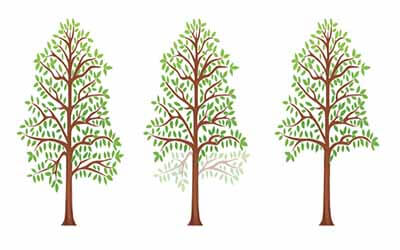
Crown thinning – This process is essential to restore the health status of a crown. Crown thinning starts by removing 3rd and 4th order branches. This allows more light and airflow to the trees. It also reduces the risk of infecting fungus on the trees and keeps the trees healthy.
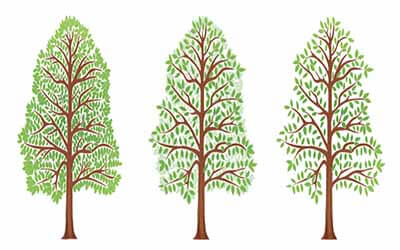
The Importance of Pruning & Trimming
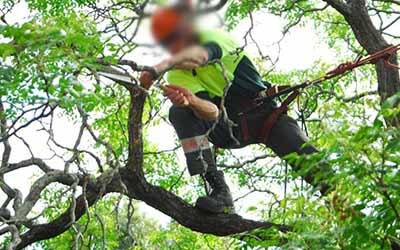
Overlooking plant maintenance is a big mistake. One can get several benefits from maintaining their lawns, gardens, and yards. Pruning and trimming your house would be much more presentable than before. Besides, it allows trees for proper growth as well as helps to control insects and plant-related diseases. The importance of pruning and trimming is undeniable. Let’s dig more.
Pruning vs Trimming
To be truthful, the terms ‘pruning’ and ‘trimming’ are not that different and are often used interchangeably but surprisingly there are some small but sharp differences between the two. When you are removing the dead or infected branches or stems of trees, you are pruning. Trimming, on the other hand, is supposed to cut the overgrown plants.
Pest & Insect Control
By pruning and trimming one can manage pests and insects perfectly which is one of the best benefits to be mentioned. Uncontrollable spreading of insects on your property becomes a matter of concern. Tent Worms usually colonize insects that build nests in your trees and eat the surrounding foliage. Sometimes insects can spread diseases and weaken the plants. Additionally, if the plants are too close to your home, the insects may invite other unwanted pests to nest inside it which could be dangerous. So, pruning and trimming from time to time is essential.
Protection
Protection becomes the first priority of any family. Dead, infected, and diseased branches can create a major hazard to your home that should be eliminated immediately. Anyway, by properly pruning and trimming your plants and trees, you can easily avoid such kinds of imminent danger. So, keeping eyes open on your home and its surroundings making sure your property is safe would be great. A timely manner of pruning and trimming can destroy this danger nip in the bud.
Proper Growth
Plants do need proper maintenance for their adequate growth. It is obvious that pruning and trimming shrubbery can improve the health and growing level of the plants. Truth be told, structurally pruning a young plant can be benefitted in the long run. It is necessary to remember since the plants are matured, they need less corrective pruning because they have already a healthier formation but regrettably if there is a loss in shape the plants can weaken and stop supporting the entire plants.
So, what we understood is all plants require specific maintenance at different times throughout the year. In addition, it is tremendously important to continually monitor your home’s landscape so that you can take immediate actions when needed.
How To Trim And Prune a Tree?
If you are to trim or prune a tree or shrub, you need to prepare and follow some respective steps. These steps are really necessary or else you may not be successful to do that or can get injured.
As pruning and trimming require different methods to get the job done, it is important to follow the right process.
Steps to prune a tree –
Step – 1: You must have to wait till the time until the leaves fall from the tree.
Step – 2: Make sure you have all the required sharpened tools like shears or clippers.
Step – 3: Now, start by cutting any dead, or loose branches to grow healthily.
Step – 4: You are recommended to cut off the smaller branches first and then proceed for the larger branches. At this stage, a sharpened hand saw may be required to prune big branches. Remember, it is never wise to cut any main branch this is connected to the heartwood or center of the tree.
Steps to trim a tree –
Step – 1: Gather all the equipment and tools you need like hand clippers or pruning shears. Make sure all the tools are well-sharpened and in working condition before starting trimming a tree.
Step – 2: Making a plan on how should be your tree looking before cutting is wise. To make it easier, you can even mark with a pencil on the branches where to start cutting.
Step – 3: Now is the time to cut off using your clippers from the small exterior branches. Go on cutting unless you have the desired look on the tree.
Step – 4: Make sure no loose and infected branches are left
Step – 5: Cut any branches that hinder the aesthetic beauty of the house and the branches that are going in the wrong direction like an open electrical wire.
Well, if you enjoy now having a beautiful yard and healthy plants, we think pruning or trimming you were trying to make has been successfully done. This process is required in order to maintain the health of the plants.
One more thing, although the differences between pruning and trimming are subtle, knowing these important techniques help you achieve the perfect balance for your trees’ appearance, growth rate, and overall health.
Biggest Missteps of Pruning and Trimming
On the inexperienced hand, a plethora of mistakes can be done which is obviously harmful to the trees. Excessive pruning can hamper the beauty as well as the health of the trees. So let’s see the common and big missteps of pruning and trimming of trees.
Misstep – 1: trimming or pruning trees at the wrong time. Take proper initiatives depending on the species to trim or prune trees. Remember, trees that are stressed shouldn’t be wise to trim and if the proper timing is off, there is a possibility to lose the tree altogether.
For example – trimming branches facing west in the summer is a huge mistake because the sun’s rays can scald certain species.
Misstep – 2: improper cuts can also be a big mistake. For example – if you prune branches too close to the trunk this means you are getting rid of the collar (it’s a swell/bump where the branch connects to the trunk). The mistake is cutting very close to the trunk can hinder to growth of special stored cells that heal the tree from damage.
Misstep – 3: cutting too close and leaving a gaping wound can create a nest of insects. Anyways, improper cuts can also be the reason to fall a big branch or the trunk to split.
Misstep – 4: one of the common mistakes is topping. If you have a tree that’s too big, topping is often seen as a quick fix.
Remedies of Missteps of Pruning and Trimming
- Excessive pruning may happen all too often. Be careful about not removing more than 20 percent of an adult tree’s foliage in one fell swoop. However, most of the time, about 8 percent is ideal.
- Removing most of the canopy limits the tree’s ability. That can hinder to produce fruit or support itself. Always remember, structural pruning is better than going after a tree with a prune-heavy hand.
- On the contrary, raising the canopy too much is called lion’s tailing. If you let raise your canopy much, it may look ugly, albeit not dangerous, and not a look you want.
So, trimming and pruning of trees is a matter of concern. If you cannot do the job, leave it to the professionals and they can make your trees an element of the aesthetic beauty of your house.
Frequently Asked Questions
Pruning trees bring some undeniable benefits including boosting the tree’s health, improving safety, and enhancing aesthetics.
Tree pruning is supposed to apply on big branches or trees to remove unwanted, overgrown, infected, diseased, and dead portions of trees whereas trimming is done on small and delicate plants, hedges, and shrubs.
Professional arborists suggest tree pruning winter to be the best time of the year. They prefer this time because it is easy to observe and identify the deadwood by looking for cracks, fungus growth, and changes in branch color. However, using proper techniques you can trim most trees year-round.
There are no straight answers to this question. The frequency of tree pruning and trimming depends on the tree species and its condition. Al least once a year but twice a year would be great to prune or trim. Besides, if you identify any infected branches by insects or dead or diseased branches of the tree, you can take initiative to prune it by applying proper techniques.
Pollarding – refers to cutting the branches of a tree to contain its size. Experts suggest starting this process when a tree is young and continuing once every two years.
Reduction – is a technique of tree trimming that involves shortening the branches selectively. It also helps to reduce the spread and height of a tree and curb excessive growth sprouts.
Topping – is a process that should start when a tree is indiscriminately cut back to stubs. This method is not usually preferred because the result is unpredictable.
Final Words
Knowing the differences between pruning vs trimming is important to observe the health condition of the trees. Pruning vs trimming and its differences is a good topic to know too. Proper time, method, process, and tools are required to do this. Improper ways of doing pruning or trimming can harm your trees as well as ruin the beauty of your garden or house. So, acquire knowledge on pruning vs trimming more and then be ready to apply it. We hope, you found this article useful.

